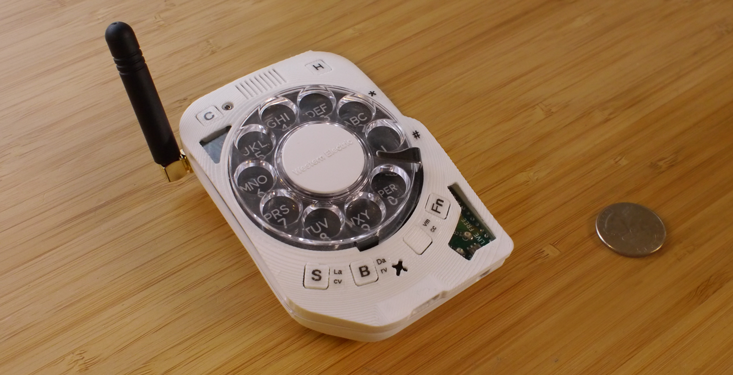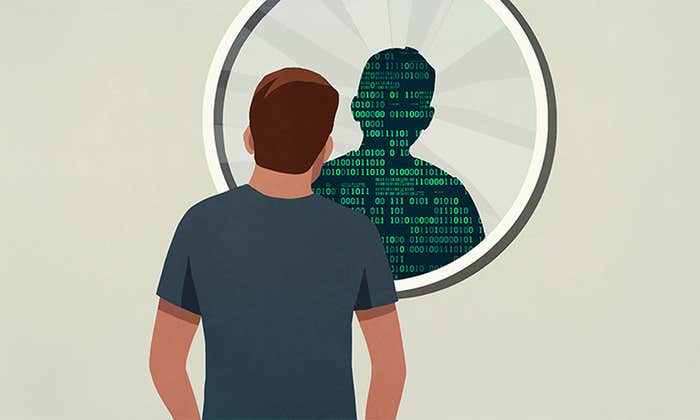In 2007, when touchscreens first started coming on the scene, I was excited, like everyone. As a lifelong science-fiction fan, they always seemed to me to be the obvious choice for future user interfaces. But, for over a decade, I’ve been living in what feels like a bad dream. The devices we have now are not what science fiction promised. When you grow up using a personal computer with a keyboard and a mouse, you come to expect precision, and the computers of the future—including smartphones—should only be an improvement on that. In Star Trek: The Next Generation, all the computers are touchscreens, cluttered with detail in a good way. The creators of that show imagined what the next step would be beyond the incredibly dexterous control personal computers offered. The crew of the Enterprise weren’t poking at big, colorful blocks with context-dependent responses to swipes, with even the most basic functionalities hidden within menus. Most importantly, the computers were used for “computery” things. Mapping the stars. Translating alien languages. Analyzing genomes. There was no hint of social media, or that people would stop talking in favor of the apparently irresistible siren call of texting for even the briefest of correspondence. Or that the technology would be used by our governments to track us.
Perhaps smart technology can eventually live up to what I saw on TV in the ’90s.
It was an odd time for me, when touchscreens were rolling out, as I was just coming to terms with the realization that my childhood dream of becoming an airline pilot wasn’t what I wanted. I was torn between physics, filmmaking, teaching violin, and a newly sprouted idea of starting an “invention factory” company. Just a few years later, I joined the Cosmology Instrumentation Group at Brookhaven National Laboratory, falling into work on astronomical telescopes, which seemed a bizarre turn of fate since I had no credentials to justify such a position. By this time I’d been exposed to others’ smartphones and decided to hold my flip phone close, eventually coming to regard touchscreen technology as generally horrible. Although they’re capable of precision, touchscreen operating systems discard any pretense of maintaining the operational clarity of personal computers. What if I open a program (an Internet-browsing “app,” say), swipe it away, and then open it again? If that program is already running, the system will bring that program to the front again—but shouldn’t I know whether it’s maximizing an already-opened program, or starting it anew? And what if I want to open a second instance of that program instead? These operating systems treat us like we’re children, and I don’t appreciate it.
This is why, in a sort of rebellion, I’ve designed and built my own dumb cell phone, complete with a rotary dial. In the last month or so since Wired interviewed me, I’ve been getting so many requests from people wanting to buy the dumbphone that I’ve decided to make it available in a minimal kit form. Some soldering is required.

With the exception of a roughly month-long experiment with a smartphone, I have been happy with having a flip phone, a good excuse not to text, because everyone knows how awkward and cumbersome texting on one can be. They’re not immune to stupid user-interface design either—mine has more than once entered speakerphone mode unprovoked while answering calls, and that kind of thing can cause permanent hearing loss. Nevertheless, to me, the frustrations of smartphones are even more intense. I guess what it comes down to is that I always expected that a future with pervasive computer technology would beget technologically-inclined users. Instead, the technology has been perverted to encourage technical complacency. I began plotting my escape.
The big surprise is that other people actually like the rotary cell phone. I never intended it to be something anyone but myself would use. But it went viral in early February and now, after three years of trying to start the “invention factory” company I envisioned a decade ago—and with the first such product produced and ready to send out to customers (98 of the 100 made are sitting in my basement)—I find myself inundated with emails from people wanting their own rotary cell phone: Wrong product, people!
It’s okay. I’d been itching for years to use a rotary dial as a data entry interface for one of my projects. They’re easy to interface with electrically, so I imagined a rotary numpad replacement for a computer, or perhaps as a means to enter sky coordinates on a steampunk telescope mount. Then, skimming one of my favorite parts suppliers, I noticed a cellular transceiver evaluation board. With that key piece, the possibility of building a cell phone now seemed almost easy, and adding a rotary dial sounded quirky enough to be fun. I could finally have a phone, I thought, that is entirely mine, as tactile as I can imagine—one that behaves the way I want it to (and with no need to write the firmware necessary for texting!). It would be wacky, sure, but that wouldn’t be the point. The point would be to have a real, usable phone, one as far from having a touchscreen as possible while being a slap in the face to smartphones because, in a few ways, it would actually be more functional.
These operating systems treat us like we’re children, and I don’t appreciate it.
For example, the rotary cell phone—which is now, in fact, my primary phone—has a real external antenna with superior reception; instantaneous signal strength and battery metering with more resolution than just four or five bars; and, on the back, an ePaper display (a terribly underused and absolutely beautiful technology that’s bistatic, meaning it doesn’t take energy to display a fixed message, like that you missed a call). The power control is an actual slide switch, not a button you hold down that makes you wonder what it might really be doing. It fits in a pocket. Calling the people I most often call is actually faster than with my old flip phone, and the battery lasts more than a day. Most importantly, if I want to change something about the phone’s behavior, I can do it, with no one to blame for poor performance but myself.
A week after the phone garnered more attention than I thought possible, I found myself questioning the wisdom of shunning offers from folks willing to pay obscenely for their own version. I had to seriously consider turning it into a product, and fast. Do you ever write yourself a note that would be both illegible and cryptic to anyone else, but it’s okay because you’re the only one who ever needs to read it? That’s what this phone was for me. It’s easy to make a user interface for oneself but it wasn’t even close to being something other people could make sense of.
From the original proof of concept, splayed like some unholy vivisection on my workbench, to the more refined device, the functionality of the keys, and the overall form of the casing, has gone through something like five complete rehashings. I had decided, early on, to design a proper printed circuit board instead of doing everything totally by hand, and by the time the phone went viral things were even a bit more polished due to my own obsessiveness. Couple this with the fact that I’d recently cut my teeth understanding how to mass produce electronics, and I was able to come up with a more refined version of the electrical design that could be mass produced as a kit in about a week. At the time of this writing, several weeks later, I’m still waiting for the first shipment of fully assembled electronics from China.
The only catch is the 3-D-printed enclosures, which comprise the part of the device that the user actually holds and interacts with. However much the media may hype 3-D printing, those of us using the technology know that it’s no replacement for injection molding. Luckily, as part of my ongoing and previously faltering attempts to start a company, I’d spent a couple years building a large format (refrigerator-sized) 3-D printer in my basement, which can print four things in parallel for low-volume production. Perhaps this is why engineers don’t usually make good CEOs … the technical challenges of product development, and the associated inclination to make refinements ad infinitum, are far more tempting than business development, with the added pitfall that the engineer will also see the engineering problems as important from a business perspective.
The fact that an actual company with money flowing in and out has come out of this sensation, nearly overnight, highlights that there must be some widely recognized problem with smartphones today. People seem to be dissatisfied with our hyperconnected culture, with its constant notifications, addictive immersiveness, and the demand that we sacrifice our privacy for no technological reason. They’re certainly willing to entertain that another way of relating to mobile communications devices is possible. Perhaps we can fix this. Perhaps smart technology can eventually live up to what I saw on TV in the ’90s. Perhaps it’s not too late.
Justine Haupt is a developer of astronomy instrumentation at Brookhaven National Laboratory and director of radio astronomy at Custer Observatory in Southold, NY. She is currently working on a radio telescope for dark energy cosmology, and has started an “invention factory” company called Sky’s Edge, which designs and produces open-source hardware.
Lead image: Alex Hertz / Shutterstock
























